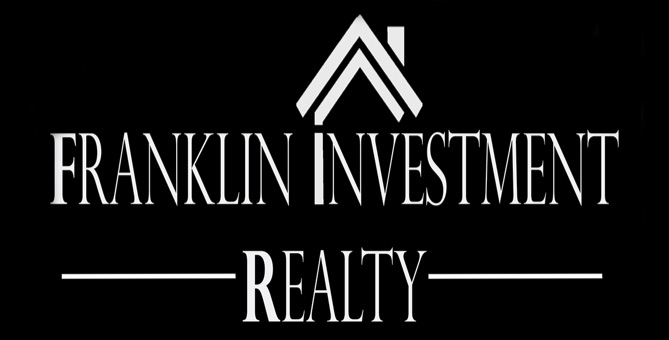The Importance of Regular Property Inspections
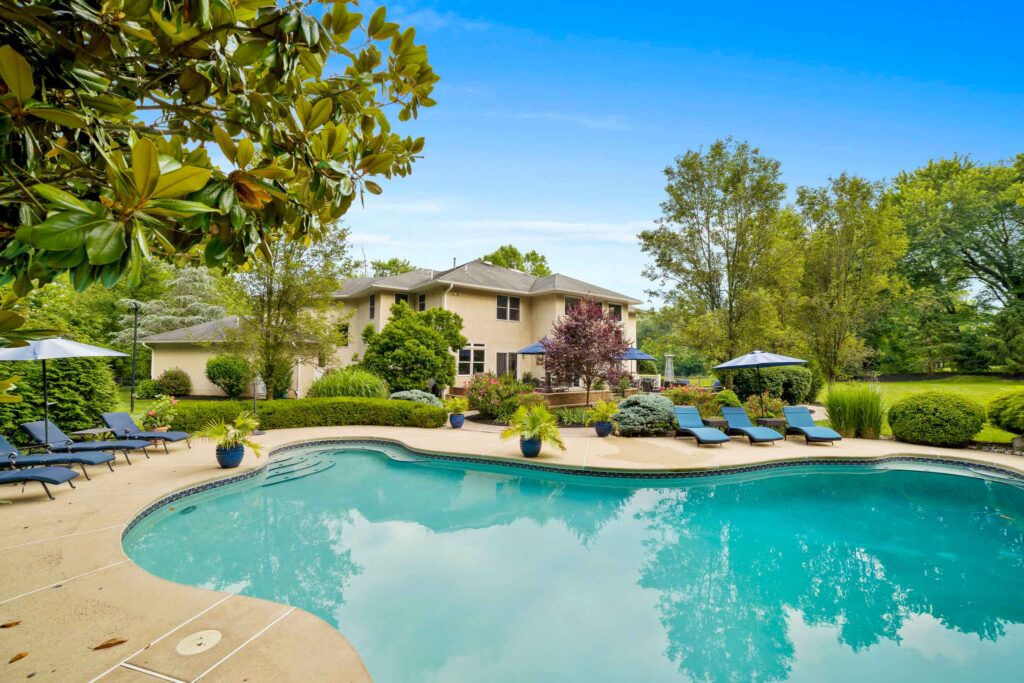
A proactive approach to property maintenance extends beyond aesthetic considerations, encompassing strict adherence to regulatory codes and ensuring critical safety features. Compliance with building codes is not just a best practice; it is a legal obligation crucial for the safety of occupants and to avoid legal consequences. Essential safety features such as handrails and railings must be regularly inspected and maintained to prevent accidents, particularly in areas with stairs or elevated platforms. Proactively addressing potential hazards through routine building inspections is fundamental in identifying and mitigating issues before they escalate. Beyond safety, this approach offers long-term cost savings by preventing minor issues from turning into major problems, ultimately enhancing property value and attractiveness to occupants or potential buyers. Key Safety Features: Inspection and Maintenance Handrails and Railings Handrails and railings are integral components of building safety, especially in multi-story structures. Compliance with code requirements regarding these features is essential to prevent accidents and injuries. Proactive maintenance should include regular inspections of handrails and railings to ensure they meet prescribed standards. Handrail systems typically found along staircases and ramps, serve as a crucial support mechanism. They provide stability and support for individuals navigating through a building. Regular inspections should verify that handrails are securely anchored, at an appropriate height, and free from any defects that could compromise their strength. Railings, which are commonly installed along balconies and elevated platforms, play a vital role in preventing falls. Property owners must ensure that railings are of sufficient height and strength to meet code requirements. Routine inspections should assess their stability and integrity, addressing any issues promptly to avoid potential hazards. Fire Safety Systems Fire safety systems are integral to swiftly detecting and extinguishing fires, safeguarding lives and property in emergencies. Consisting of alarms, sprinklers, and extinguishers, these systems demand regular scrutiny and upkeep. Testing fire alarms routinely guarantees their optimal performance, while maintenance of sprinkler systems is crucial to avert blockages or faults. Additionally, periodic checks and recharging of fire extinguishers are imperative. Adhering to fire safety codes stands as a fundamental requirement in this context. Structural Integrity The significance of a building’s structural integrity cannot be overstated, as it forms the bedrock of both its safety and long-term viability. Problems like cracks, settling, or compromised foundations have the potential to escalate into serious structural issues, ultimately resulting in collapses. To uphold the structural soundness, it is imperative to conduct routine inspections focused on identifying signs of damage. Vigilance should extend to monitoring for cracks in walls or foundations, detecting sagging roofs, and noting any irregularities in floor levels. Immediate attention to these structural concerns is essential to prevent their escalation and ensure the overall stability of the building. Regular inspection and timely maintenance are integral components in the proactive preservation of a structure’s integrity. Electrical Systems The significance of electrical systems in buildings cannot be overstated, given the substantial risk of fires and accidents associated with electrical issues. Conducting routine inspections on these systems plays a crucial role in pinpointing potential hazards, ultimately guaranteeing the safety of occupants. During inspections and maintenance checks, it is essential to be vigilant for indicators of faulty wiring, damaged outlets, or outdated electrical panels. Promptly addressing any exposed wires or overloaded circuits is vital to mitigating risks. Additionally, keeping electrical systems up to date with current safety standards through regular updates is fundamental in fostering a secure and hazard-free environment. Emergency Exits Emergency exits play a pivotal role in ensuring a prompt and secure evacuation in critical situations, such as fires or natural disasters. The accessibility and unobstructed functionality of these exits are paramount. To uphold their effectiveness, it is imperative to conduct routine inspections and maintenance. This involves regular testing of all emergency exits, confirming that exit doors open effortlessly without any hindrance. Additionally, proper signage should be installed to guide occupants effectively towards the exits and exit routes must be kept free of obstacles to guarantee a swift and unimpeded evacuation process. Potential Hazards and Mitigation Strategies Identifying and mitigating potential hazards is a fundamental aspect of proactive property maintenance. Hazards can range from structural deficiencies to environmental factors and addressing them promptly is crucial for preventing accidents and ensuring the well-being of occupants. Mold and Mildew Building code insulation requirements, including vapor barrier basement, are vital for addressing mold and mildew issues. By regulating temperature, managing humidity, and preventing moisture penetration, these measures go beyond regular inspections and ventilation. The combination of insulation and vapor barriers acts as a comprehensive solution to mitigate the risk of mold and mildew in buildings. Slip and Trip Hazards In addition to addressing uneven flooring, loose carpets, and wet surfaces through regular inspections, incorporating deck railings is a practical solution to enhance safety and prevent slip and trip hazards. Deck railings provide a physical barrier, reducing the risk of accidental falls and injuries. This preventive measure goes hand in hand with routine inspections to create a safer environment, mitigating potential liabilities associated with slip and trip hazards. The combination of thorough inspections, maintenance, and the installation of deck railings ensures a comprehensive approach to hazard prevention in various spaces. Pest Infestations Properties should be regularly inspected for signs of pest infestations. Implementing pest control measures and addressing any vulnerabilities in the building structure can help prevent damage and maintain a healthy living or working environment. Compliance with Code Requirements Adhering to building code requirements is essential for ensuring property safety and occupant well-being. For instance, building code insulation requirements, specifying standards for walls, roofs, and floors, significantly contribute to energy efficiency, maintaining consistent indoor temperatures, and improving durability. Compliance not only fosters a safer living environment but also leads to long-term cost savings through reduced energy consumption. Moreover, meeting these codes often qualifies builders for incentives and enhances property value. Additionally, adherence streamlines insurance processes, contributing to comprehensive risk management. Beyond individual properties, conformity to codes establishes community standards, creating a safer and more cohesive living environment for all residents. Importance of Proactive Property Maintenance and Inspection A proactive approach to property maintenance
Turning a Fixer-Upper into a Lucrative Investment

Fixer-uppers can be a stressful investment if you’re not sure about what you’re doing. We all want to make as much money back as possible, but hundreds of decisions have to be made before you can get to that step. These are the steps to making a major profit off of your property and what clear mistakes you should avoid. 1. Planning Comes First Make sure to plan as thoroughly as possible before you start your project. This means considering how long you want this to take, how much money you’re willing to spend, and which areas are non-negotiable. Nonnegotiable areas would be like replacing a sagging roof or fixing a messed up electrical system. These have to be done for the home to pass an inspection and are the bare minimum. Planning gives you time to pick the best options and possibly get some deals along the way. 2. Prepare For The Mess Any renovation project is going to cause more mess and trash than you could imagine. This means you need to plan ahead and look into residential dumpster rental and some protective masks, tarps, gloves, and possibly helmets, depending on how intense the remodel is. Try to consider cleaning along the way so you don’t have to complete a major cleaning job after everything else is completed. 3. Source Your Materials Carefully What materials do you want to use? Are you seeking sustainability, or are you more interested in finding the best way to waterproof basement spaces, regardless of materials? Either way, you should look for high-quality materials that are built to last. Taking shortcuts and trying to save money here will just result in a lackluster property that buyers won’t be interested in. 4. Consider How Far You Can DIY DIY-ing is a great way to save money. Contractors are incredible but can get pricey if you’re not prepared. Unfortunately, fixing an issue you shouldn’t have DIY-ed can be even more expensive. There’s a thin line you’ll need to straddle between what you can do and what you should do. Don’t let yourself waste money trying to complete an upgrade that’s outside of your capabilities. 5. Deep Clean Before Listing This feels like an obvious point, but deep cleaning your property is vital if you want to sell quickly and for more money. Buyers want to picture their lives in the homes they’re looking at, and it’s harder to see that vision if they’re looking through layers of grime and dust to get there. Deep clean from the top down and outside to inside. This means starting with your gutters and getting curb appeal in order before moving inside and starting with fans and lighting fixtures. Buyers will be excited to think about moving everything they own into the house immediately, and you’ll be able to rest easily knowing dirty grout isn’t going to keep you from selling for top dollar. 6. Look Into Highest ROI Projects Return on investment is one of the largest things to consider. You want to make sure the money you’re putting in is worth it and won’t immediately vanish into the property. Small things, like doing a minor kitchen remodel instead of a major one, are a good place to start, but so is seeking out higher ROI projects. Replacing an old garage door is one of the highest ROI projects you can complete, but there are dozens of others that can make positive changes. Updating an older roof, adding in-ground drainage, and even updating to a more energy-efficient HVAC system are all changes that can boost value and get buyers running to the property. Some projects, though, like finishing a basement or garage, can end up with wasted money. Although you should consider making a home-office-specific space in the house, you shouldn’t spend more than 10% updating any one area of the property. 7. Don’t Fall For Short Lived Trends There are some projects that are timeless, like modern fireplace design ideas, but many are quick blink-and-they’re-gone trends. When you’re upgrading your property, it’s vital that you can recognize the difference between the two. Look at projects and consider what they’ll be like in twenty years. Do you really need to make this kitchen all-white, or has that trend been out for a couple of years already? Do you really need this era-specific wallpaper, or is that going to have to be taken down in one or two years? Focus on lasting impact that will make a large difference instead of little gimmicks that will age quickly and poorly. Your Fixer-Upper Can Become a Dream Home Whether this is the first home renovation you’ve ever worked on or you’re interested in improving your skills, you’re not alone. Follow some of these tips, and check out Franklin Investment Realty to fix your fixer-upper! Author Bio: Sam Willis is a freelance writer that loves sharing his knowledge and expertise in residential and commercial real estate, as well as engineering and construction. He lives in Atlanta, Georgia where he enjoys spending time with his wife and researching real estate trends in his free time. Sam’s work as a freelance writer can be found on Building Product Advisor, a construction industry resource site.
Choosing The Best Building Materials for Upgrades
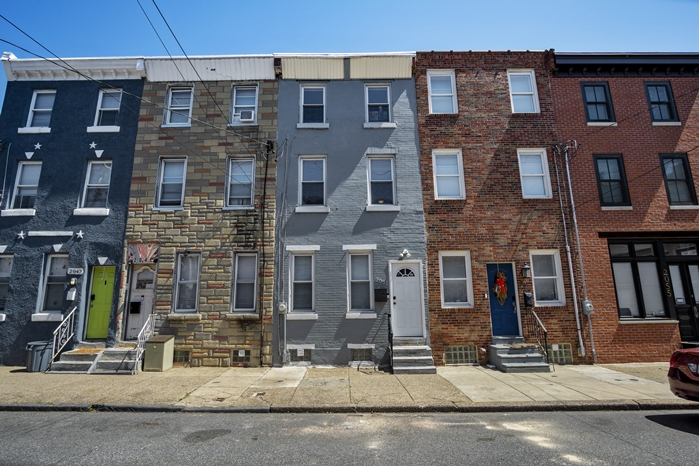
Upgrading any part of a property is extremely exciting! Not only do you get to build it to your specific needs and wants, but you also get a chance at a great return on investment. How do you pick your supplies, though? Whether this is a minor remodel or a major overhaul, this is everything you need to know about your supplies before you get started. 1. Working in the Kitchen When working in a modern kitchen, you may feel inclined to use a lot of white and bright colors, but that’s not the best go-to as we move into the second half of the 2020s. Buyers are seeking out natural wood colors, which means you can easily create a stunning and sustainable kitchen while keeping on trend. Bamboo, beech, and cedar are incredibly popular wood types right now. Remember that the more local a kind of wood is, generally, the more sustainable it is. Local native wood will also help your home feel like it fits the local environment better. 2. Bathroom Remodels Remodeling your bathroom means keeping moisture in mind. You want to use high-quality materials that are going to last and have them installed correctly so you can avoid slippage or eventual damage. Look into a ceramic tile that’s been treated so it isn’t as slick for floors. Consider a low-flow toilet and putting in touches of luxury. This can mean heated shower floors or a fog-resistant mirror to keep people interested and excited. 3. Bedroom Upgrades Our bedrooms are our little escapes from the world, so these need to feel as comforting as possible. Consider putting in smart lighting that can be controlled via phone or voice and blinds that are dust-resistant. A huge push in 2024 has been for sound-reducing materials. People want the best replacement windows for New England, paired with insulation thick enough to keep all noise at bay. Although you want to get along with your neighbors, you don’t want to hear them when you’re trying to sleep. 4. Laundry Spaces Laundry is a huge deal, something that can make our lives quickly crumble if we don’t keep it under control. Because of this, it’s a good idea to make your laundry room a welcoming and comfortable space for every step of laundry. This means having a sink for rinsing out stains, a bench to set baskets and clothing, and a rack for hanging things when necessary. If you’re going to upgrade the appliances, go for energy-efficient products with good reviews. Avoid any gimmicks or products that aren’t built to last. 5. Updating the Exterior The exterior of your property is where the largest and most important upgrades need to be considered. If your roof is over thirty years old, it could be time to replace it. The best material for this will depend on your area, but most are turning to slate. Slate roofs can last over 100 years if well-maintained and look awesome. They’re resistant to heat and rain and need minimal care. This is a perfect option to get more buyers interested. Consider adding exterior structures and looking into whether a trellis or a pergola is better for your property. 6. Breathing Life into Living Spaces Living spaces like dens and living rooms shouldn’t be overlooked! These are key spaces in which buyers picture their lives. Not only should they be attractive and spacious for entertaining, but they need to be comfortable. For these living spaces, it’s a good call to stop and look at areas like your HVAC system and your flooring. Upgrading to a vinyl floor is the best call if you want a floor that can handle anything, is cost-effective, and looks incredible. If you have wood floors, now’s a good time to refinish them 7. Understanding Storage Areas Storage is one of the most important spaces in any property in the 2020s. Over a third of people have storage spaces that aren’t part of their main residence. Although this doesn’t seem like a huge deal, it’s a large monthly cost most would rather live without. Adding storage space that’s waterproof, easy to access, and attractive is all as important as using the best deck screws when you’re building an outdoor entertainment area. Add heavy insulation in these spaces, and consider adding vertical storage in places like the garage to take it further. 8. Sustainability Is a Great Option If you want to upgrade in a way that will keep buyers running to your home, sustainability is a big deal. This means using materials that are long-lasting, locally or sustainably sourced, and implementing them in a way that makes sense. Avoid gimmicks or greenwashing, but make sure to mention this in the listing! Your Building Materials Are An Important Decision Whether you’re upgrading your garage or turning a bedroom into a suite, the materials you use will make a huge difference in the final project. Consider some of these tips, and check out Franklin Investment Realty to help your project be a success! – Sam Willis Author Bio: Sam Willis is a freelance writer that loves sharing his knowledge and expertise in residential and commercial real estate, as well as engineering and construction. He lives in Atlanta, Georgia where he enjoys spending time with his wife and researching real estate trends in his free time. Sam’s work as a freelance writer can be found on Building Product Advisor, a construction industry resource site.
The Rise of Sustainable Real Estate Investments
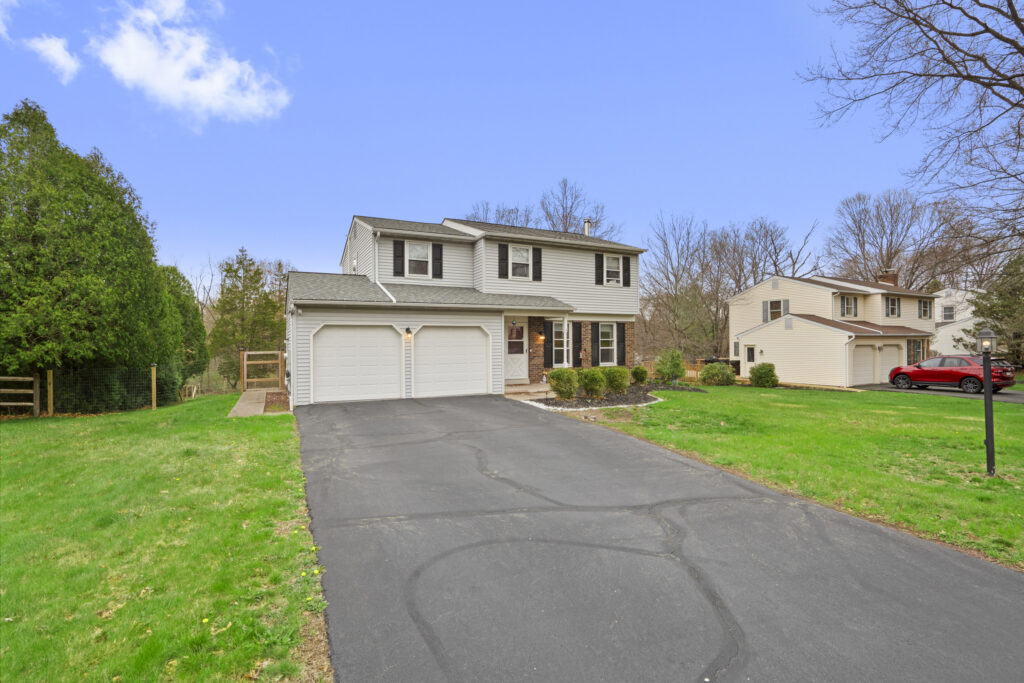
Sustainability has been one of the hottest topics in the real estate world for the last twenty years. Buyers want a property that isn’t going to hurt the environment they’re in, and that need is shown in higher prices and faster sales. Whether you’re renovating your first property for sale or you’re considering investing in a sustainable piece of real estate, this is everything you need to know. 1. What Makes Real Estate Sustainable? A home that’s built with high-quality and reliable materials is always going to be a better investment than something rushed and cobbled together. Although it’s easy to assume that you can just invest in any property and wait for a profit, you can create a larger ROI if you go about it intelligently. Sustainable real estate is a property that was built or updated with materials that have a low impact on the environment both in their creation and their use. Sustainable properties have as little of a negative action on their environment as possible. These last as long as possible and require few upgrades or repairs as long as they’re well maintained. 2. How to Work Sustainably In Any Environment The best thing to remember is that sustainability changes drastically based on where you are. The key reason for this is locally sourcing as many materials as possible. A sustainable lawn and exterior for a home in Michigan is going to look incredibly different from a similar property in Arizona. Consider what weather and events you’ll need to keep in mind for your property, and look into ways you can sustainably help your home stay on guard from those. For instance, using a rain garden and in-ground drainage can keep water at bay if you live in a moisture-rich environment. 3. Why Sustainability Brings Such a High ROI Over two-thirds of buyers state they’re more likely to purchase a property they believe is sustainable over any other option. This is because people understand sustainability as a property that will last and do as little harm as possible. Creating a property that will save people from having to make these changes themselves is something many are willing to pay extra for. There’s a lot of work and thought that goes into sustainability that the average person can’t handle. “When starting on a home renovation journey, I believe in the power of quality roofing materials to not just protect but elevate the quality of a home. ” Jeff Guthrie, Prescott Roofing Co. 4. What Is Greenwashing? Greenwashing is an important term to know because it’s a common scam in sustainable building. Companies will say their products use fewer materials or are more sustainable, but in reality, they’re treating these as buzzwords instead of actual commitments to the environment and their products. A sod company may say their product is ‘natural and eco friendly’ despite artificial grass suppliers offering a product that requires less water waste and environmental damage. We all have a natural bias we’ve learned through our lives that can make it hard to tell which companies are telling the truth or not, so make sure to do your research. 5. Weighing Cost Against Quality Sustainable products aren’t always more expensive, but when they are, it can feel like you’re being nickel and dimed out of a good upgrade. Just remember that these small, seemingly inconsequential decisions can add up to a property that’s worth far more than its unsustainable counterparts. The quality of most sustainable materials is high because they want it to last a lifetime instead of immediately ending up in a landfill. Ensure that you’re picking for that quality rather than trying to save money. 6. Easy Mistakes to Avoid There are some mistakes that everyone makes, but that doesn’t mean you shouldn’t try to avoid them! One of these is simply taking any company at face value. Research everything from tools for insulation to the best lawn care companies. Another is rushing through this project and having to buy everything at the last second. Planning ahead will give you the time to shop for deals, get to know new suppliers, and save a lot more money. The final mistake is selling without treating the property the same way you’d treat any other. This includes deep cleaning, staging, and setting up an awesome listing. Although sustainability can carry your property for a while, it shouldn’t be the only weapon in your arsenal. 7. Should You DIY Everything? DIY-ing too much can result in shoddy results. The work you put into a property can undo all of the sustainability if it has to be redone and have materials thrown out. Make sure to only bite off as much as you can chew, and hire pros to complete the rest. Sustainable Investments Are The Main Goal If you want your property to succeed, sustainability is vital! Follow these tips, and check out Franklin Investment Realty to make your dream property a reality. Author Bio: Sam Willis is a freelance writer that loves sharing his knowledge and expertise in residential and commercial real estate, as well as engineering and construction. He lives in Atlanta, Georgia where he enjoys spending time with his wife and researching real estate trends in his free time. Sam’s work as a freelance writer can be found on Building Product Advisor, a construction industry resource site.
Smart Strategies for Renovating Historic Properties for Profit
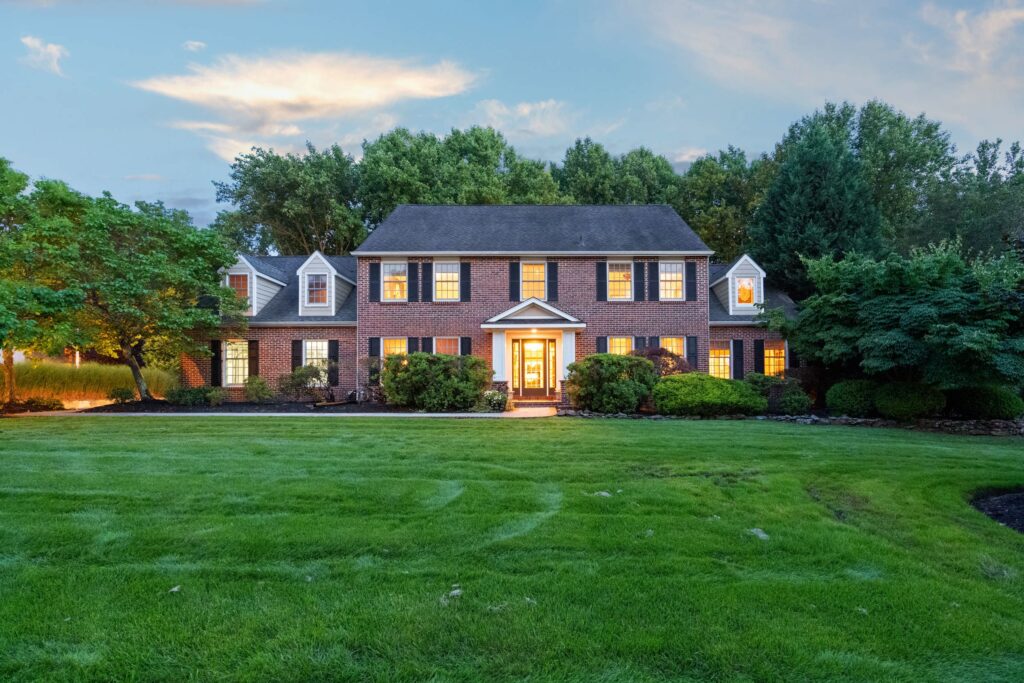
Renovating historic properties presents a unique and rewarding opportunity for investors. These projects can be highly profitable, but they require careful planning, respect for the property’s historical significance, and a strategic approach to modern upgrades. Here are some smart strategies for renovating historic properties for profit. Understanding the Historical Significance Before beginning any renovation project on a historic property, it’s crucial to understand its historical significance. This involves researching the property’s history, architecture, and any notable events or people associated with it. Knowing the historical context not only informs your renovation plans but also adds value to the property by preserving its unique story. This understanding will guide your decisions, ensuring that you maintain the integrity of the property while making necessary updates. Navigating Legal and Regulatory Requirements Historic properties are often subject to strict legal and regulatory requirements. These can include local, state, or national preservation laws that dictate what changes can and cannot be made. It’s essential to consult with local preservation boards or historical societies early in the planning process to understand the guidelines you must follow. Navigating these regulations can be complex, but compliance is non-negotiable. Failure to adhere to these rules can result in fines, legal action, or the loss of historic designation, which can significantly reduce the property’s value. Financial Planning and Budgeting Renovating a historic property can be more expensive than a typical renovation due to the need for specialized materials and craftsmanship. Creating a detailed budget is essential. Start by obtaining multiple estimates for the work and build in a contingency fund for unexpected expenses. It’s also wise to explore financial incentives such as grants, tax credits, or low-interest loans specifically designed for historic preservation projects. For example, if you are dealing with layers of old paint that must be removed to reveal original woodwork, investing in a high-quality paint stripper can be crucial. While this might seem like a minor detail, using the right products can save time and money in the long run and ensure the preservation of historical features. Preserving and Enhancing Historical Features One of the main appeals of historic properties is their unique architectural features. Preserving these elements is key to maintaining the property’s value and appeal. Original features such as wood shake roofs, ornate moldings, and period-appropriate fixtures should be retained and restored whenever possible. For instance, a wood shake roof is not only historically accurate but also adds character and authenticity to the property. When restoring such features, work with contractors who have experience in historic preservation to ensure the work is done correctly and in a manner that respects the property’s historical significance. Incorporating Modern Design Elements Don’t be afraid to add detail for visual appeal. One of the best ways to do this is by using things like cove crown molding, which pulls eyes up and gives them details to settle on without cluttering the space. You can find details like this that will spruce up any home’s style. Another modern detail many have started adding to historical homes is smart cameras, smart lighting, and a smart thermostat. These simple comforts can pull a home into the 21st century without ruining its aesthetics. Marketing a Renovated Historical Property Once the renovation is complete, effective marketing is essential to attract buyers who appreciate the value of a historic property. Highlight the unique historical features, the quality of the restoration work, and any modern upgrades that enhance livability. Professional photography, virtual tours, and detailed descriptions of the property’s history can make your listing stand out. Networking with real estate agents who specialize in historic properties can also be beneficial. They often have a network of potential buyers who are specifically looking for properties with historical significance. Leveraging Technology Technology can play a significant role in both the renovation and marketing of historic properties. During the renovation, tools like 3D scanning and modeling can help you visualize changes and ensure that updates are in line with the property’s historical character. These tools can also help in creating detailed plans that comply with regulatory requirements. In terms of marketing, leveraging social media, virtual tours, and real estate websites can reach a broader audience. Potential buyers from different parts of the world can explore the property online, increasing the chances of finding the right buyer. Long-Term Profit Strategies Renovating a home can allow you to sell for far more, especially when it’s a historic property, but it’s vital that you don’t underestimate the struggle. Landmark homes require far more maintenance and preservation work, so buyers can be shy of leaping for them. Instead, invest in DIY-ing as much as you can, making a good working relationship with contractors so you can keep prices low, and avoiding major renovations in the kitchens or bathrooms. Historic Properties Should Be Given A Fresh Start There’s a lot of value in renovating historic properties! When you’re ready to make that next step, consider checking out Franklin Investment Realty for more ideas and to find your next project property! Author Bio: Sam Willis is a freelance writer that loves sharing his knowledge and expertise in residential and commercial real estate, as well as engineering and construction. He lives in Atlanta, Georgia where he enjoys spending time with his wife and researching real estate trends in his free time. Sam’s work as a freelance writer can be found on Building Product Advisor, a construction industry resource site.
Storm Ready: Preparing Your Home and Roof for the Worst
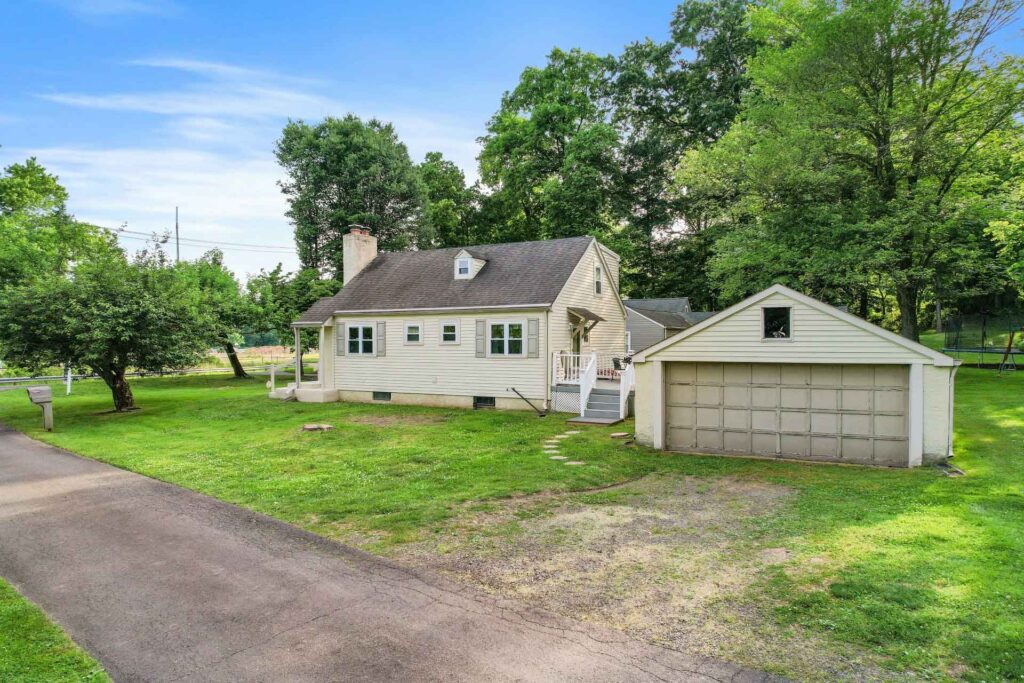
As the climate continues to change, the frequency and intensity of storms are on the rise. From hurricanes and tornadoes to severe thunderstorms, homeowners need to be proactive in fortifying their homes to withstand the destructive forces of nature. One critical aspect of storm preparedness is ensuring that the roof and exterior of your home are resilient enough to endure the worst. In this article, we will explore the steps you can take to make your home and roof storm-ready. Understanding the Risks Different types of storms bring different threats. Hurricanes and tropical storms come with high winds, torrential rains, and sometimes flooding, leading to roof damage and water infiltration. Tornadoes are violent windstorms that can cause catastrophic roof damage, shattering windows and tearing houses apart. Thunderstorms can bring heavy rains, strong winds, and hail, all of which can damage roofs and other parts of your home. Winter storms, with snow and ice accumulation, can lead to roof collapse, ice dams, and water infiltration. Each storm type requires specific preparation strategies, but some general principles apply across the board. Routine Roof Maintenance Regular maintenance is the key to being storm-ready. A well-maintained roof is less likely to suffer damage during a storm. You should inspect your roof at least twice a year, ideally in the spring and fall. Look for roof leakage, missing, damaged, or curling shingles, and signs of wear and tear. Address any issues immediately—replace damaged shingles, fix leaks, and reinforce weak areas to prevent minor problems from becoming major ones during a storm. Ensure gutters and downspouts are free of debris, as clogged gutters can cause water to back up and seep under the roof, leading to water damage and leaks. Keep trees near your home trimmed to prevent branches from falling on the roof during high winds. Overhanging branches can also scrape and damage the roofing material. Check the flashing around chimneys, vents, and skylights to ensure it’s secure and in good condition, as flashing prevents water from seeping into joints and causing leaks. Enhancing Appeal with Green Home Innovations Enhancing your property’s value is crucial for a successful flip. Consider incorporating energy-efficient features to attract environmentally conscious buyers. Simple upgrades like installing smart lighting or switching to energy-efficient appliances can make your property more appealing. Not only do these upgrades reduce energy consumption, but they also offer a reduction in utility bills, ranging from 5% to 30% annually. This makes your home both economical and attractive. Harmonizing Academia and Real Estate Ambitions Balancing house flipping with your academic goals requires careful planning. Setting achievable goals and maintaining realistic expectations are key. The fix and flip market in 2024 highlights the importance of a well-thought-out approach. By researching property values and neighborhood trends, you ensure sound investments that can yield substantial returns to help finance your education. Efficient scheduling is essential; it helps manage your time effectively, reducing holding costs and study-related stress. Elevating Home Potential Through Smart Renovations Strategic renovations are essential for enhancing property value while keeping costs in check. Update siding or garage doors to focus on curb appeal, which can yield a significant return on investment. Modernizing kitchens and bathrooms can greatly increase functionality and appeal inside. A midrange bathroom remodel, for example, can recoup nearly 67% of its cost. By prioritizing these targeted improvements, you increase your property’s desirability and market competitiveness, making it an intelligent choice for quick and profitable reselling. Tapping Into Local Market Dynamics for Optimal Returns Evaluating local property market values is crucial when flipping houses to finance your education. Analyzing these markets helps identify investment opportunities where properties are undervalued or poised for appreciation. Staying informed about asking prices provides insights into seller expectations and potential resale values. This knowledge equips you to make informed decisions, maximize financial gains, and support your academic endeavors. Navigating the Legal Landscape in Real Estate Deals Understanding contractual obligations is crucial in house flipping. Ensure a legally binding agreement where both parties sign, protecting your interests and minimizing disputes. Clearly define the terms of sale, including price, closing date, and any necessary contingencies, to establish a transparent transaction process. Including dispute resolution provisions helps maintain smooth business operations and safeguards against potential legal challenges. Embracing house flipping to finance your education is more than a financial strategy—it’s a transformative journey that weaves together the pursuit of knowledge and entrepreneurial acumen. As you engage with academic and real estate challenges, you build a foundation that bolsters your bank account, confidence, and expertise. The skills you acquire from analyzing markets, negotiating deals, and executing renovations are assets that transcend the classroom. Tapping into the symbiosis of house flipping and academic growth can unlock the potential for financial independence and a deeper understanding of the synergy between education and enterprise. Discover your dream home with Franklin Investment Realty, where over 30 years of expertise in the Greater Philadelphia area will ensure a seamless buying and selling experience! — – Shirley Martin
From Property to Progress: Turning Real Estate into Education Equity

From Property to Progress: Turning Real Estate into Education Equity In an era where financial challenges often hinder educational pursuits, innovative solutions are more essential than ever. Blending academic analytical skills with practical real estate investment experience creates a powerful approach to funding education. This guide explores house flipping to support your educational goals while building knowledge of property markets and business strategies. It provides a comprehensive roadmap to expand property reach through digital tools, increase home value through strategic upgrades, and effectively balance studies with a growing house-flipping business. Expanding Your Real Estate Network with Digital Innovation Returning to school as an adult can be daunting, especially considering the financial implications. However, flipping houses can be a lucrative way to fund your education. To maximize your property’s reach, leverage modern digital tools. Utilize immersive technologies like virtual reality tours and 3D imagery to provide potential buyers with an engaging experience. These tools allow buyers to explore homes in detail from their current location, making informed decisions without physically visiting the property easier. Also, social media platforms offer targeted advertising options, enabling you to reach specific demographics based on income, geographic location, and interests. Blending Education and Business with E-Learning Solutions Online degree programs offer a flexible and budget-friendly solution when juggling house flipping with returning to school. Unlike traditional on-campus courses, online learning allows you to tailor your study schedule around your business demands. Pursuing effective cybersecurity programs enhances your understanding of safeguarding digital assets and offers strategic advantages at a lower cost. This dual approach is beneficial as these programs are typically more affordable than traditional education, allowing you to advance your business skills without sidelining your real estate projects. Enhancing Appeal with Green Home Innovations Enhancing your property’s value is crucial for a successful flip. Consider incorporating energy-efficient features to attract environmentally conscious buyers. Simple upgrades like installing smart lighting or switching to energy-efficient appliances can make your property more appealing. Not only do these upgrades reduce energy consumption, but they also offer a reduction in utility bills, ranging from 5% to 30% annually. This makes your home both economical and attractive. Harmonizing Academia and Real Estate Ambitions Balancing house flipping with your academic goals requires careful planning. Setting achievable goals and maintaining realistic expectations are key. The fix and flip market in 2024 highlights the importance of a well-thought-out approach. By researching property values and neighborhood trends, you ensure sound investments that can yield substantial returns to help finance your education. Efficient scheduling is essential; it helps manage your time effectively, reducing holding costs and study-related stress. Elevating Home Potential Through Smart Renovations Strategic renovations are essential for enhancing property value while keeping costs in check. Update siding or garage doors to focus on curb appeal, which can yield a significant return on investment. Modernizing kitchens and bathrooms can greatly increase functionality and appeal inside. A midrange bathroom remodel, for example, can recoup nearly 67% of its cost. By prioritizing these targeted improvements, you increase your property’s desirability and market competitiveness, making it an intelligent choice for quick and profitable reselling. Tapping Into Local Market Dynamics for Optimal Returns Evaluating local property market values is crucial when flipping houses to finance your education. Analyzing these markets helps identify investment opportunities where properties are undervalued or poised for appreciation. Staying informed about asking prices provides insights into seller expectations and potential resale values. This knowledge equips you to make informed decisions, maximize financial gains, and support your academic endeavors. Navigating the Legal Landscape in Real Estate Deals Understanding contractual obligations is crucial in house flipping. Ensure a legally binding agreement where both parties sign, protecting your interests and minimizing disputes. Clearly define the terms of sale, including price, closing date, and any necessary contingencies, to establish a transparent transaction process. Including dispute resolution provisions helps maintain smooth business operations and safeguards against potential legal challenges. Embracing house flipping to finance your education is more than a financial strategy—it’s a transformative journey that weaves together the pursuit of knowledge and entrepreneurial acumen. As you engage with academic and real estate challenges, you build a foundation that bolsters your bank account, confidence, and expertise. The skills you acquire from analyzing markets, negotiating deals, and executing renovations are assets that transcend the classroom. Tapping into the symbiosis of house flipping and academic growth can unlock the potential for financial independence and a deeper understanding of the synergy between education and enterprise. Discover your dream home with Franklin Investment Realty, where over 30 years of expertise in the Greater Philadelphia area will ensure a seamless buying and selling experience! – Shirley Martin
How to Hone in Your Home-Buying Priorities
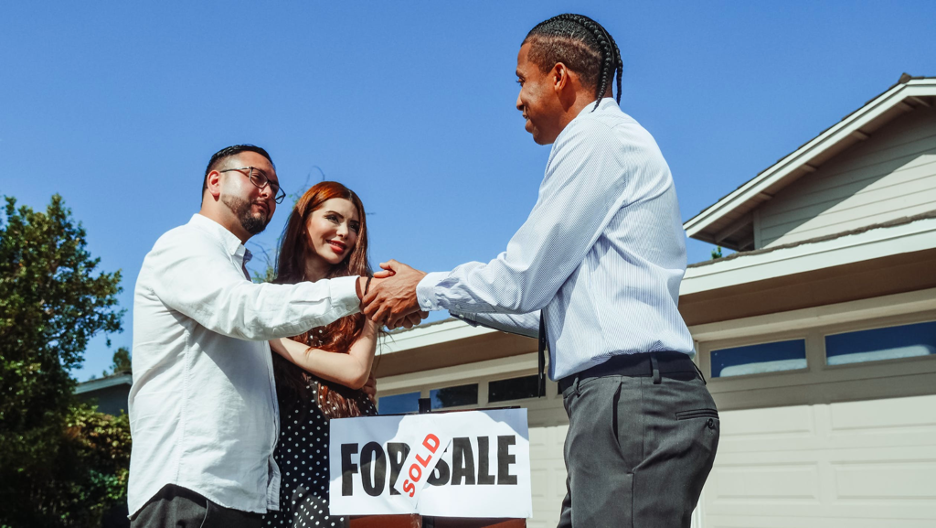
There are a myriad of factors that you must take into account when you’re searching for a home. In addition to your budget, you need to think about how long you want to live in a home, what neighborhood is best, and what school district you want to be in. Of course, some of these considerations are more important than others — especially when you’re choosing between a starter home and your forever home. Consider these tips and help from Franklin Investment Realty to establish your priorities and make the right choice. Assess Your Plans for the Future One of the biggest factors that will influence your home search is how you envision your future. If you plan on having kids in the next few years, for example, investing in your forever home may be a better idea. It will likely be bigger, offering more room to expand your family. Along with the additional space, though, will come more need for upkeep — and a bigger price tag, too. Still, the additional cost may be worthwhile if you really want to put down roots in the area you’re shopping in. You can also avoid the hassle of moving again if you choose to invest in the home that you plan to stay in forever. Although a forever home will cost more, it could also be a wise financial move if you’re able to snag a low interest rate on your mortgage. Conversely, if your plans for the future include a home that you can rent out in a few years, a starter home may be the better bet. A starter home will allow you to build equity and then eventually turn the property into a source of income. Additionally, if you plan on staying for the long haul, it can be a good idea to explore your home warranty options. Not to be mistaken for homeowners’ insurance, a home warranty protects your home from incidentals, like appliance breakdowns or problems with essential systems like HVAC, plumbing, electrical, and more. Check out these steps to find the best home warranty provider. Decide What You Can Afford Your budget will likely be a deciding factor in whether you go for a starter home or your forever home. In most cases, a forever home will be pricier because it will be bigger than a starter home, and it may also be in a better area or have more amenities. You will need to weigh whether these additional features are worth the bigger monthly payment you’ll be faced with. Although a starter home may have a lower listing price, there may be substantial repairs or upgrades necessary to get it to the point you want. According to statistics, the average home remodel costs between $19,800 and $73,200. This is no small sum, and it could offset the savings you gained by choosing a starter home. This is especially true if you choose a fixer-upper that needs extensive repairs. Finally, you should consider how easy it will be to resell the home you choose. Life changes can happen unexpectedly, and even if you opt for your forever home, you may find yourself needing to sell it. A starter home will likely be more difficult to resell — especially if you only invest in minimal upgrades. A forever home, on the other hand, will likely attract more interest from prospective buyers. Get Your Priorities Straight Before House Shopping Finding the right house can be difficult, but it can also be rewarding when you finally find the perfect home. Before you can find the perfect home, you need to determine whether you’re looking for a starter house or a forever house — and you need to get your priorities straight. – Suzie Wilson
5 Tips to Keep in Mind When Home Buying Amid Rumors of a Crash

Pandemic trends led to a high-demand real estate market, with a new wave of remote workers buying in more affordable rural areas, and driving prices up. With inflation on the rise in general, and many housing markets remaining hot through a predicted downturn, it may seem a risky time to buy a home, or to invest in a new property. Despite signs of real estate being overpriced, the growing number of first-time buyers and investors are keeping the real estate market growing, even while slowing. There are plenty of deals to be had, but no one wants to get stuck paying too much for something that doesn’t keep its value. Homes, and property, as a general rule, are good investments, but as we learned in 2008, investors can tip the scales enough to bring a crash. While it’s true we’re in new territory, and one would expect a “correction” in markets where prices continue to rise beyond what local median incomes can support, the comparisons to the 2007-2008 housing market crash and the Great Recession are stirring unfounded anxieties. Consider these tips for navigating the homebuying process. Tread Carefully with Foreclosures Buying a foreclosed home could be one option to save money on your investment. But it’s crucial to understand what you’re getting into with an as-is property deal. For example, though you may be able to waive an inspection (especially if you’re buying cash), it’s not always a good idea. A home inspection can reveal issues that you would otherwise be oblivious to – leading your new property to become a money pit in no time. Hiring an inspector ensures that you find out about leaky plumbing, out-of-date HVAC systems, and roof issues long before signing over your cash. Make Essential Improvements First Treating mold and other hazards is a solid first step, and a good deep cleaning is often in order. You may also consider low-maintenance landscaping to increase your (or your tenants’) enjoyment of the home and yard. After all, the less time spent working, the more time you’ll have for relaxation. Cleaning the windows, because it’s often neglected by even the most fastidious homeowners, can make a real difference in the presentation of the home. The rooms are slightly brighter, the views more crisp. Cleanliness can have an overwhelmingly positive effect on our response to new surroundings. Thankfully, you can comparison-shop for the best window washers near me. Verify Potential Purchases Ahead of Time When buying a home while there’s looming uncertainty, there’s always a possibility that legal issues will crop up. Foreclosures are particularly susceptible to both structural and legal problems. But it’s smart to check out the property’s title status before making an offer – or at least before locking in a contract. As Rocket Lawyer explains, in most areas, you can perform a free property title search through the county assessor. It could take some digging. But confirming that the title is in good shape is a must when you’re investing in a potentially awful investment. Have Cash In Hand If you’re looking for a rental property to invest in, you may have funds available for an outright purchase. But if you’re a first-time homebuyer or are taking out a conventional loan, low rates aren’t the only thing to know about in a recession. Because many real estate markets are becoming increasingly competitive, prospective homeowners can expect to play hardball when it comes to making an offer. That might mean asking for seller concessions or closing cost support is a no-go. You’ll also need cash for your down payment and incidentals, whether you’re going with a conventional loan or an alternative with lower up-front costs. Conventional loans require a 3 percent down payment minimum, and they are available at fixed or adjustable rates. By paying more up-front, a homebuyer is proving to the seller that they can afford any unexpected costs during escrow. To be the most appealing to sellers, waving around a bit of cash can’t hurt. Plus, if your down payment is 20 percent or more of the loan amount, you could skip private mortgage insurance (PMI) – a significant savings over the lifetime of the loan. Keep an Open Mind Because talk around the real estate markets and anxiety over a repeat of the housing crash and great recession, the perception of a volatile market, of an impending crash, or even of a slowing market could affect the prices of individual homes. Another look at a fixer property in a good neighborhood could be worth your time. Similarly, comparing financing options or offering more cash at closing could boost your appeal to sellers. The predictions are in and despite similarities to the last housing crash, most housing markets will only slow slightly and the demand for housing will continue to drive home prices up. The current forecasts predict that buying today is still a good investment over the long haul. Buying or selling in the greater Philadelphia area? Make sure to work with a skilled agent from Franklin Investment Realty! Contact them today! – Shirley Martin
How the Right Kind of Lighting Can Transform Your Home
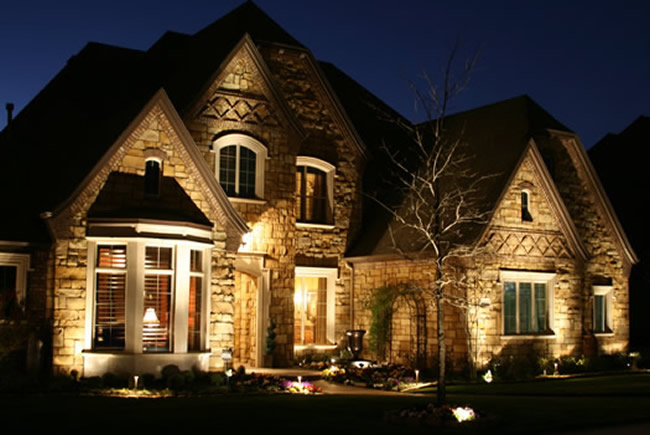
The right lighting can totally change the aesthetics of any room. In fact, the right kind can liven up a room, making it exciting and extremely eye-pleasing. It is important that you use reliable and good-quality electrical wires and cables while installing the lights. Let us learn more about lighting and how it can change the appearance of any room. Key Lighting Design Factors Area and size of the room Your preferences Height and shape of the ceiling Color of the walls, furniture and accessories Shadows and reflections in the room Daylight integrations Energy efficiency Level of illumination (lux) Electrical codes, documentation, and specifications 3 Types of Lighting General or Ambient Lighting This type of lighting is simply used to make an interior space visible. Ambient lighting is soft and allows you to function without a harsh glare. Use the right type of home wiring while installing these lights. Task Lighting Task lighting is concentrated, smaller lighting. It is meant to help you see clearly when you do activities like reading or sewing. It works well only when it is used as a contrasting light. Accent Lighting The primary objection of accent lighting is to draw the eye to its focal point. You can use it to add style and even drama to a room. Ensure house wiring is of high quality while installing these lights. How to Light Different Rooms of a House Entryways The entryways should be well-lit. One of the best lighting options for entryways is ceiling fixtures. Avoid downlights as they can create high contrast shadows. You can also use track lighting if you want to create a wall wash. Make sure the electrical cables are not visible when you fix the lights in the entryway. Stairs and Hallways There should be enough lighting in stairs and hallways to provide a safe passage for those using them. Install a light fixture every 4 – 6 feet. If you use the right type of lighting, you can make the area seem more spacious. You can use different light sources like wash lights or wall fixtures. Utility Rooms and Garages In these areas, you need plenty of ambient and recessed lighting. Utility rooms like the laundry area would require task lighting. Do not place the lights directly over the vehicles in the garage. Installing moisture-proof fluorescent lighting would be ideal. Go over the house electrical wiring to determine which would be the best spots to install lights. Living Rooms A living room is where you spend most of your waking hours. This is where you would gather with your family, host guests, watch television, read, or work. Multiple light layers, along with dimmable lights would look great. You can also use a combination of accent lighting and ambient lighting. Kitchens This is undoubtedly one of the most functional areas of the house. You don’t just cook in the kitchen, but also eat, hang out or even work. This means you need plenty of ambient light along with task lighting in the kitchen. Under-cabinet lighting can provide task lighting for the counters. Consider using energy-efficient lighting since you would use this space a lot. Dining Room Install beautiful light fixtures like chandeliers or pendant lighting above the dining table. You can also use track lighting and dimmers to create a more relaxed or romantic ambience. If you want to use recessed lighting, then aim the light toward the walls as it will create ambient light. Ensure that the home electrical wiring supports the installation of these lights. Bedroom Bedrooms should be relaxing and help you wind down after a long and tiring day. Moreover, the lighting should help you fall asleep. Ambient lighting, along with dimmer controls, will help you achieve that. Accent lighting will give the room a more decorative look. Don’t install any light directly above the bed. Bathrooms Bathrooms are all about function, safety, and aesthetics. You must have bright, even light that is shadow-free. Use recessed lighting as it would help free up space and offer a glare-free look. Choose a neutral light that is directed toward your face when you look at the mirror. To Conclude Remember that you must pay attention to the home electrical wiring system when you install the lights of your choice. Choose the right type of lighting, and you will see your home transform into a relaxing, comfortable and stunning place. – Jesson Pitt
